Apiculture Market Size
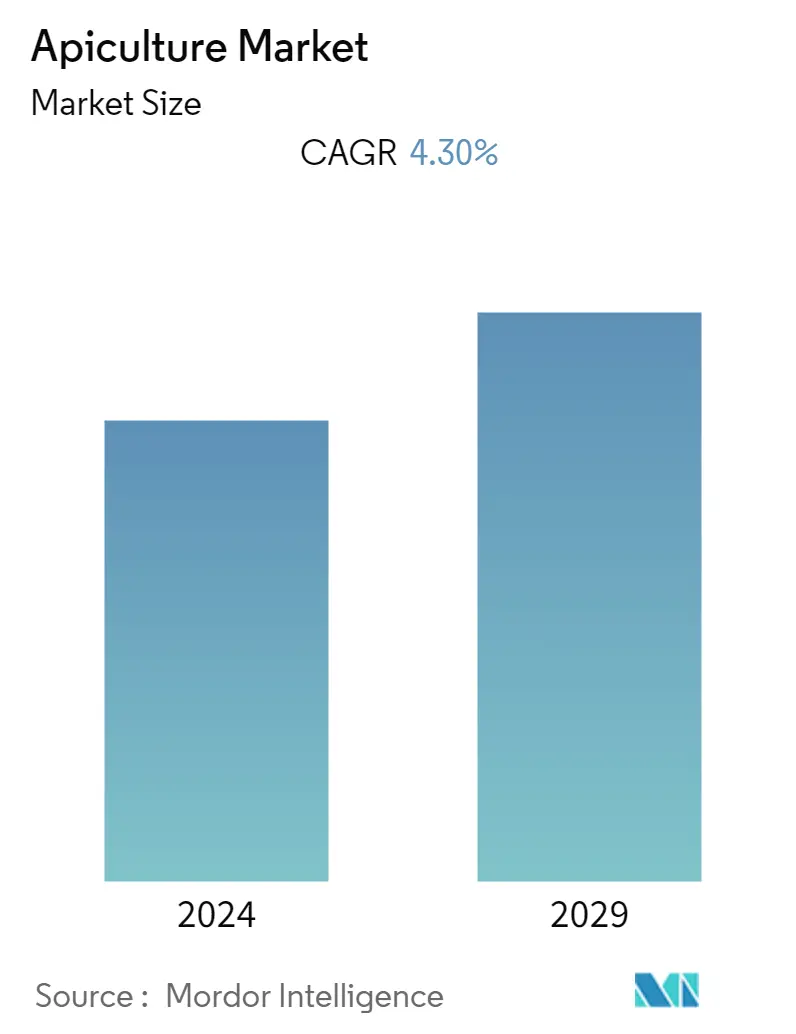
| Study Period | 2019 - 2029 |
| Base Year For Estimation | 2023 |
| CAGR | 4.30 % |
| Fastest Growing Market | North America |
| Largest Market | Asia Pacific |
| Market Concentration | Low |
Major Players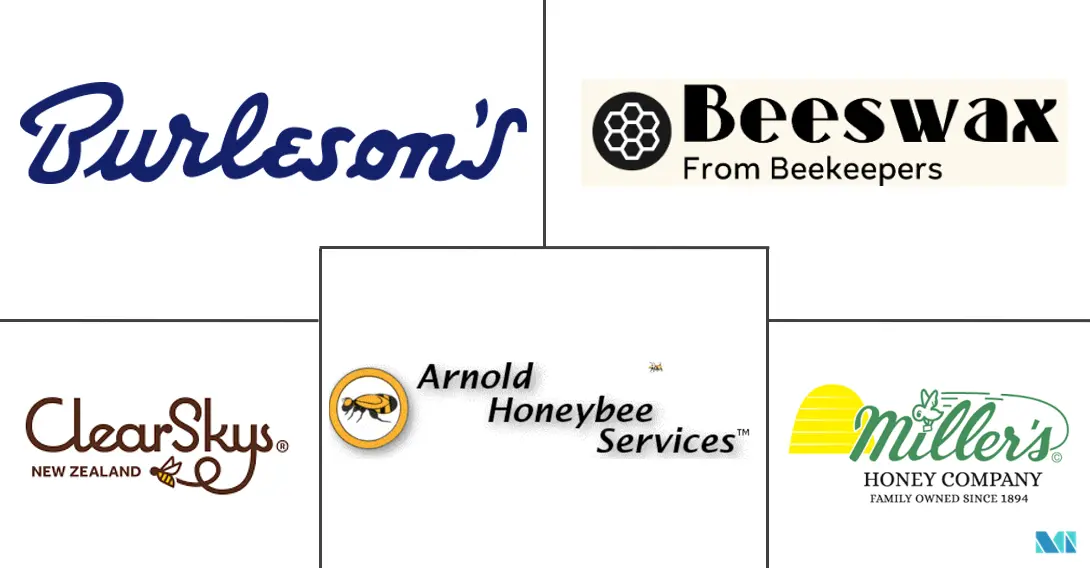
*Disclaimer: Major Players sorted in no particular order |
Apiculture Market Analysis
The global apiculture market is estimated to register a CAGR of 4.3% during the forecast period.
- Commercial beekeeping farming will come into the picture as the demand for apiculture products from various industries increases due to medicinal and cosmetic purposes, further driving the apiculture market. The benefits associated with apiculture rearing are low maintenance and cost-effectiveness.
- The increasing demand for honey, beeswax, and other byproducts in developing countries is expected to boost the global market during the forecast period. Europe and North America have a significant consumption share of products like propolis, honey, and other products, while rapid growth has been projected in the Asia-Pacific regions. Support for organic agriculture has been rising, with many organizations like National Beekeepers Association and the National Organic Value chain Association extending their support toward organic agriculture. This trend has led to a rise in pollination demand, which boosts the apiculture market.
- Consumers have become more health conscious; many customers are demanding more natural sweeteners like honey than sugar. Honey is considered a healthier way to sweeten food and beverages as honey contains about 75-80% sugar, and the rest is a mixture of water and minerals like phosphorous, calcium, magnesium, some acids, and enzymes. Therefore, health benefits associated with honey are expected to increase the demand for honey in the global market.
- Artificial sweeteners may result in obesity, elevated cholesterol, mineral depletion, tooth decay, hypertension, and cardiovascular diseases. These sweeteners are also responsible for Type 2 diabetes, metabolic syndrome, cancers, and tumors. On the other hand, honey has a low glycemic index (GI), meaning it does not immediately elevate blood sugar levels. It's also high in antioxidants, which have numerous human health benefits.
- Additionally, propolis is a resinous substance that bees accumulate from different plant types. Propolis is widely used in numerous applications due to its antiseptic, anti-inflammatory, antioxidant, antifungal, anti-cancer, and immunomodulatory properties. However, the market is primarily driven by its use as a healing product for cold sores and herpes caused due to the herpes simplex virus (type 1 and type 2). The wide range of applications of apiculture products has been driving the market studied.
Apiculture Market Trends
This section covers the major market trends shaping the Apiculture Market according to our research experts:
Honey Emerges As a Functional Sweetener
- Honey has been advocated as a substitute for sugar, with more people accepting it and including it in their diets. Moreover, the use of products like beeswax, honey, and other such products is being increasingly utilized in the cosmetics and medical industry, further spearheading the growth of the global apiculture market.
- Further, manuka honey is gaining popularity across the globe on account of its antibacterial, anti-inflammatory, and antimicrobial properties. Honey consumption as an artificial sweetener by various industries is boosting the growth of the global apiculture market.
- Additionally, apiculture-based in the cosmetics and medicines industry is expected to increase further during the forecast period. According to the United States Department of Agriculture, the value of honey production in the United States in 2021 was roughly USD 321.22 million.
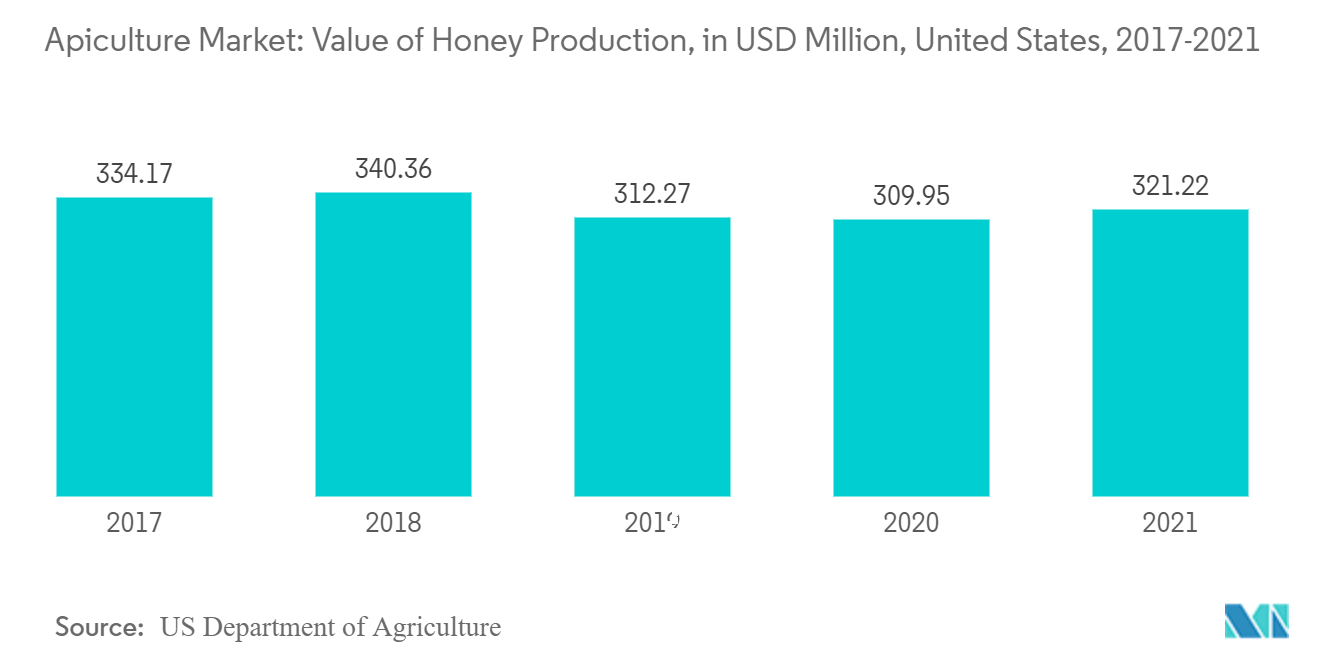
Asia-Pacific Leads the Global Apiculture Market
- The Asia-Pacific region had the largest market share in the apiculture market. China is the biggest honey manufacturer in the world. China is the world's largest country for beekeeping, honey production exporter, and honey consumption. China exports honey and apiculture-based products, including propolis, in Europe, the United States, and other Asian countries, like Japan.
- According to the UN Comtrade data, Japan's imports of live bees and insects were valued at USD 5.2 million in the year 2021. This implies the growth of apiculture-based products in the country has been increasing. Many other developing countries lack the infrastructure required to perform apiculture, making the region dominant in the market. The consumption of apiculture products like health supplements, beeswax-based medicines, and cosmetics, honey is increasing in Asia-Pacific due to the health benefits.
- Apiculture products' application as a health care product has been gaining popularity in the studied market, as it helps to heal burns, prevent dental cavities, and treat gingivitis. Also, it is used as a mouth disinfectant. It may also eliminate parasites, remove warts, and is more effective than the pharmaceutical drug to treat genital herpes.
- Additionally, the chemical-free product has been gaining popularity as a natural balm throughout the Asia-Pacific region due to its distinctive texture, best described as "gunk." This texture results from the mixture of pine resin, wax flakes, and pollen that bees collect and bring to the hive, where consumers buy the product in convenient small bottles.
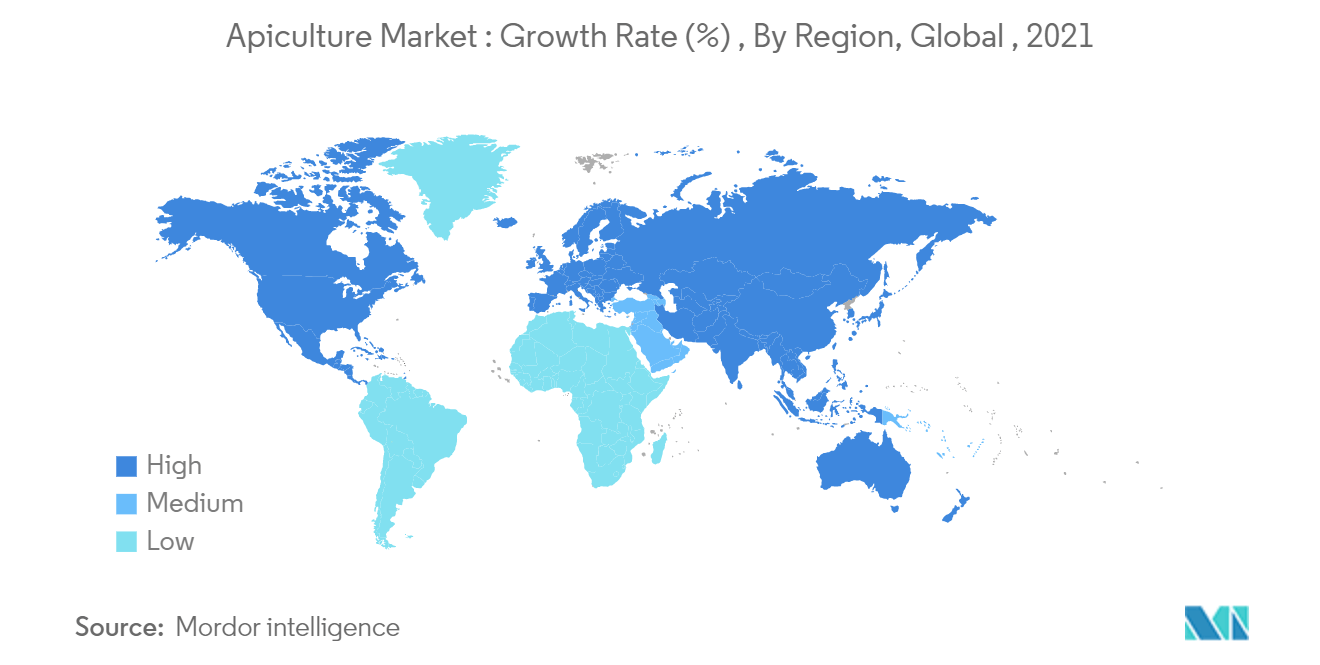
Apiculture Industry Overview
The apiculture market is fragmented, with many beekeeping firms in different regions across the globe. The major players focus on strategic planning to grow the business portfolio. Apart from business development activity, the acquisition is also considered for business growth to improve the market share. Major players like Clearskys, Arnold honey bee services, Beeswax From Beekeepers, Millers Honey, and Burleson's Honey are making strategic moves to make their businesses grow.
Apiculture Market Leaders
-
Arnold honey bee services
-
Beeswax From Beekeepers
-
Millers Honey
-
Burleson's Honey
-
Clearskys
*Disclaimer: Major Players sorted in no particular order
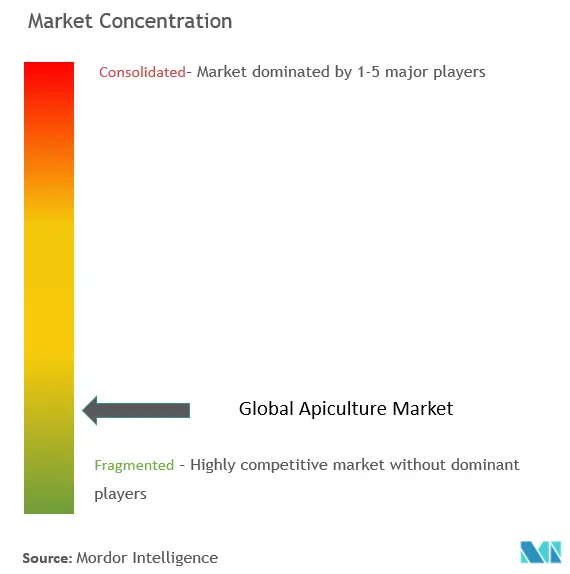
Apiculture Market News
- January 2022: Nature Nate's merged with Cannon Falls, Minnesota-based Sweet Harvest Foods, an independent private equity business that invests in supply chain and agricultural production enterprises on a controlling basis.
- March 2021: Comvita, a company that offers apiculture-based products like Mānuka Honey, Propolis, and others such products announced the official opening of its state-of-the-art Wellness Lab experiential space in the Viaduct, Auckland.
- April 2021: Billy Bee and Doyon (brands owned by McCormick & Company Inc.) announced their plans to ensure 100% honey sourcing from Canada. The shift was in response to consumers' preferences. The company also started focusing on the True Source Honey Certification Program, an industry-led effort to ensure that products are ethically and legally sourced.
Apiculture Market Report - Table of Contents
1. INTRODUCTION
- 1.1 Study Assumptions and Market Defination
- 1.2 Scope of the Study
2. RESEARCH METHODOLOGY
3. EXECUTIVE SUMMARY
4. MARKET DYNAMICS
- 4.1 Market Drivers
- 4.2 Market Restraints
-
4.3 Industry Attractiveness - Porter's Five Forces Analysis
- 4.3.1 Threat of New Entrants
- 4.3.2 Bargaining Power of Buyers/Consumers
- 4.3.3 Bargaining Power of Suppliers
- 4.3.4 Threat of Substitute Products
- 4.3.5 Intensity of Competitive Rivalry
5. MARKET SEGMENTATION
-
5.1 Product Type
- 5.1.1 Honey
- 5.1.2 Beeswax
- 5.1.3 Live-bees
- 5.1.4 Others
-
5.2 Application
- 5.2.1 Medical
- 5.2.2 Food Beverages
- 5.2.3 Cosmetics
- 5.2.4 Others
-
5.3 Geography
- 5.3.1 North America
- 5.3.1.1 United States
- 5.3.1.2 Canada
- 5.3.1.3 Mexico
- 5.3.1.4 Rest of North America
- 5.3.2 Europe
- 5.3.2.1 Germany
- 5.3.2.2 United Kingdom
- 5.3.2.3 France
- 5.3.2.4 Russia
- 5.3.2.5 Spain
- 5.3.2.6 Rest of Europe
- 5.3.3 Asia Pacific
- 5.3.3.1 China
- 5.3.3.2 Japan
- 5.3.3.3 India
- 5.3.3.4 South Korea
- 5.3.3.5 Rest of Asia-Pacific
- 5.3.4 South America
- 5.3.4.1 Brazil
- 5.3.4.2 Argentina
- 5.3.4.3 Rest of South America
- 5.3.5 Middle-East and Africa
- 5.3.5.1 United Arab Emirates
- 5.3.5.2 South Africa
- 5.3.5.3 Rest of Middle-East and Africa
6. COMPETITIVE LANDSCAPE
- 6.1 Most Adopted Strategies
- 6.2 Market Share Analysis
-
6.3 Company Profiles
- 6.3.1 Betterbee
- 6.3.2 Beeswax From Beekeepers
- 6.3.3 Miller's Honey
- 6.3.4 Clearskys
- 6.3.5 Bartnik LLC
- 6.3.6 Beehive Botanicals
- 6.3.7 EURL Atlantic Apiculture
- 6.3.8 Arnold honey bee services
- 6.3.9 Pastili Limited
- 6.3.10 PhytoPharma International Ltd. (Bee-Fuse Technology)
- *List Not Exhaustive
7. MARKET OPPORTUNITIES AND FUTURE TRENDS
** Subject To AvailablityApiculture Industry Segmentation
The practice of raising honeybees is known as apiculture. Apiculture is carried out for the commercial production of honey as well as other useful commodities like beeswax, and other such products.
In this study, only commercial apiculture feed has been considered. The report consists of an extensive study of the segments and factors driving the growth of the apiculture market. The market is segmented by product type, application, and by geography. By product type, the market is segmented into honey, beeswax, live bee, and other product types. Based on application, the market is segmented into medical, food, beverages, cosmetics, and other applications. The study also covers the global level analysis of major regions, such as North America, Europe, Asia-Pacific, South America, the Middle East & Africa.
For each segment, the market sizing and forecasts have been done on the basis of value (in USD million).
| Product Type | Honey | |
| Beeswax | ||
| Live-bees | ||
| Others | ||
| Application | Medical | |
| Food Beverages | ||
| Cosmetics | ||
| Others | ||
| Geography | North America | United States |
| Canada | ||
| Mexico | ||
| Rest of North America | ||
| Geography | Europe | Germany |
| United Kingdom | ||
| France | ||
| Russia | ||
| Spain | ||
| Rest of Europe | ||
| Geography | Asia Pacific | China |
| Japan | ||
| India | ||
| South Korea | ||
| Rest of Asia-Pacific | ||
| Geography | South America | Brazil |
| Argentina | ||
| Rest of South America | ||
| Geography | Middle-East and Africa | United Arab Emirates |
| South Africa | ||
| Rest of Middle-East and Africa |
Apiculture Market Research FAQs
What is the current Apiculture Market size?
The Apiculture Market is projected to register a CAGR of 4.30% during the forecast period (2024-2029)
Who are the key players in Apiculture Market?
Arnold honey bee services, Beeswax From Beekeepers, Millers Honey, Burleson's Honey and Clearskys are the major companies operating in the Apiculture Market.
Which is the fastest growing region in Apiculture Market?
North America is estimated to grow at the highest CAGR over the forecast period (2024-2029).
Which region has the biggest share in Apiculture Market?
In 2024, the Asia Pacific accounts for the largest market share in Apiculture Market.
What years does this Apiculture Market cover?
The report covers the Apiculture Market historical market size for years: 2019, 2020, 2021, 2022 and 2023. The report also forecasts the Apiculture Market size for years: 2024, 2025, 2026, 2027, 2028 and 2029.
Apiculture Industry Report
Statistics for the 2024 Apiculture market share, size and revenue growth rate, created by Mordor Intelligence™ Industry Reports. Apiculture analysis includes a market forecast outlook to 2029 and historical overview. Get a sample of this industry analysis as a free report PDF download.



